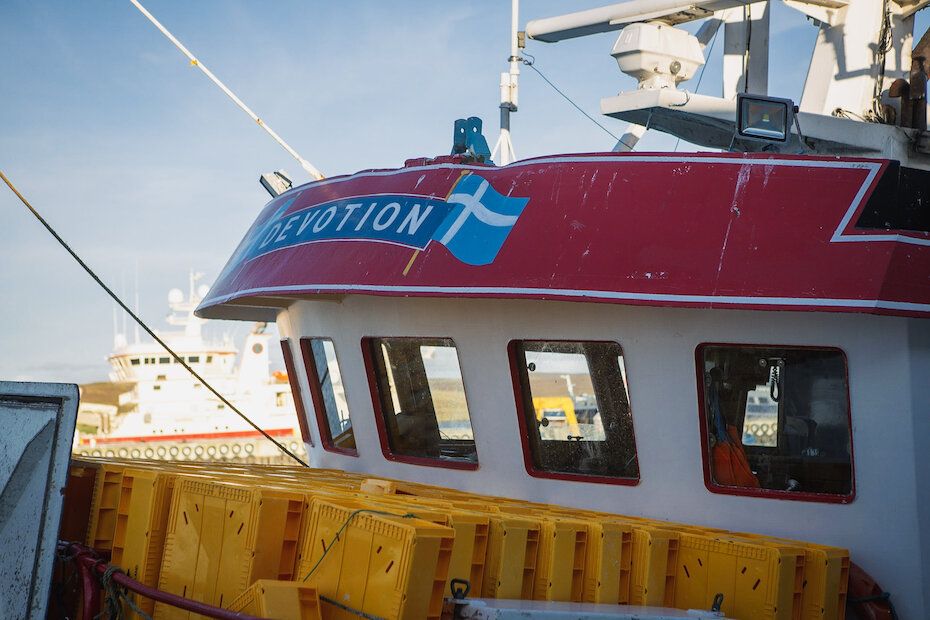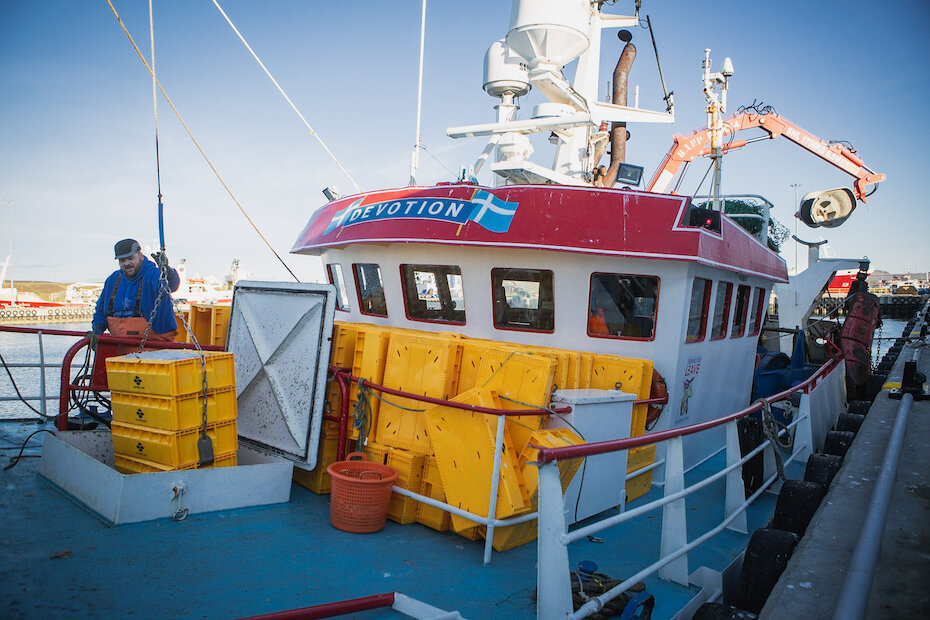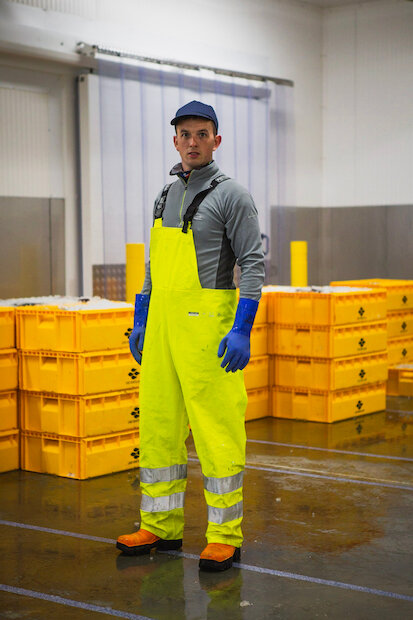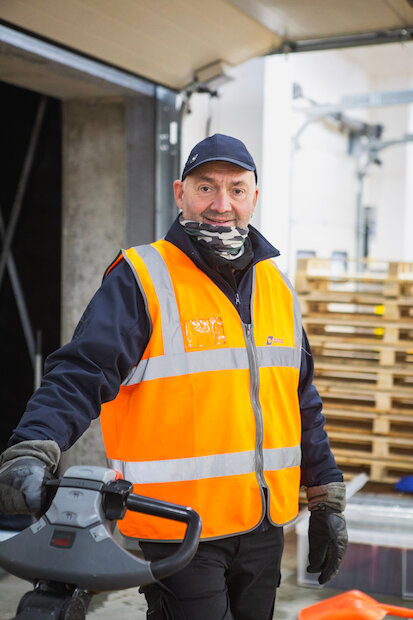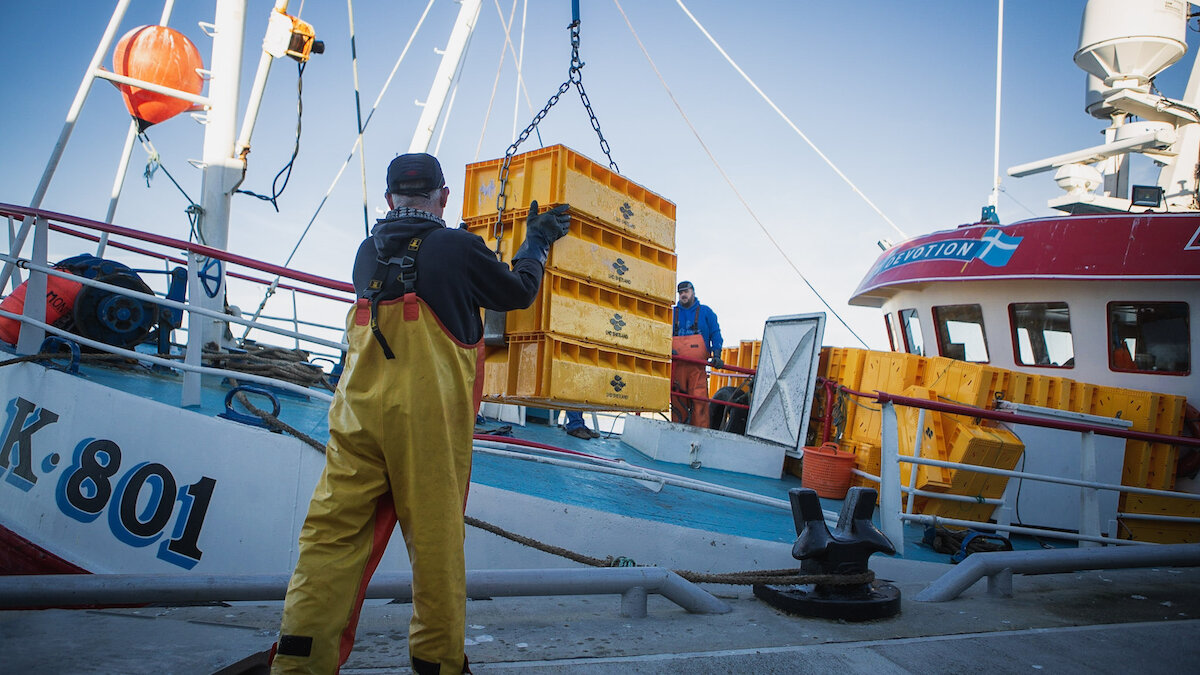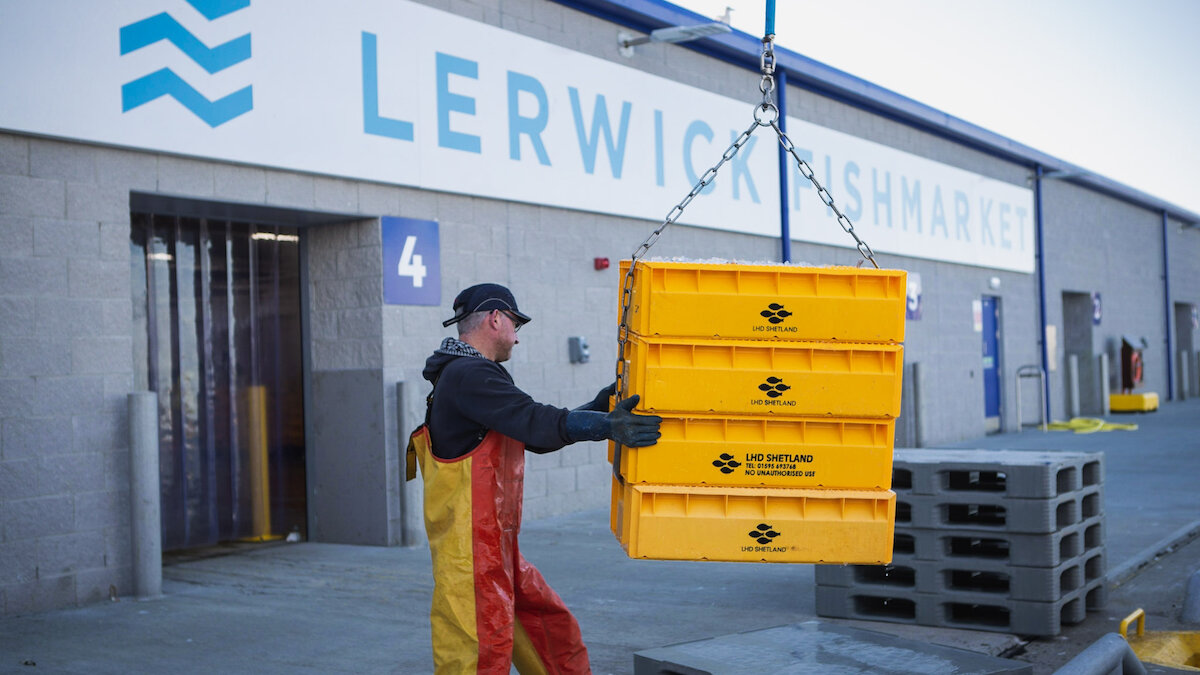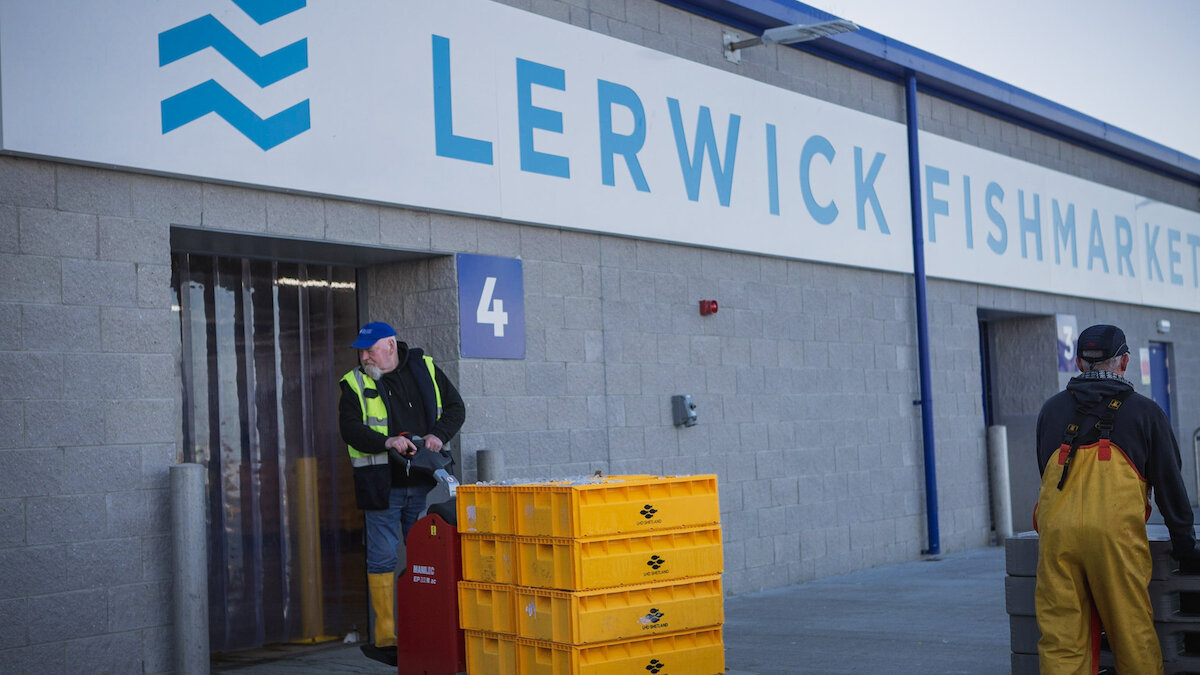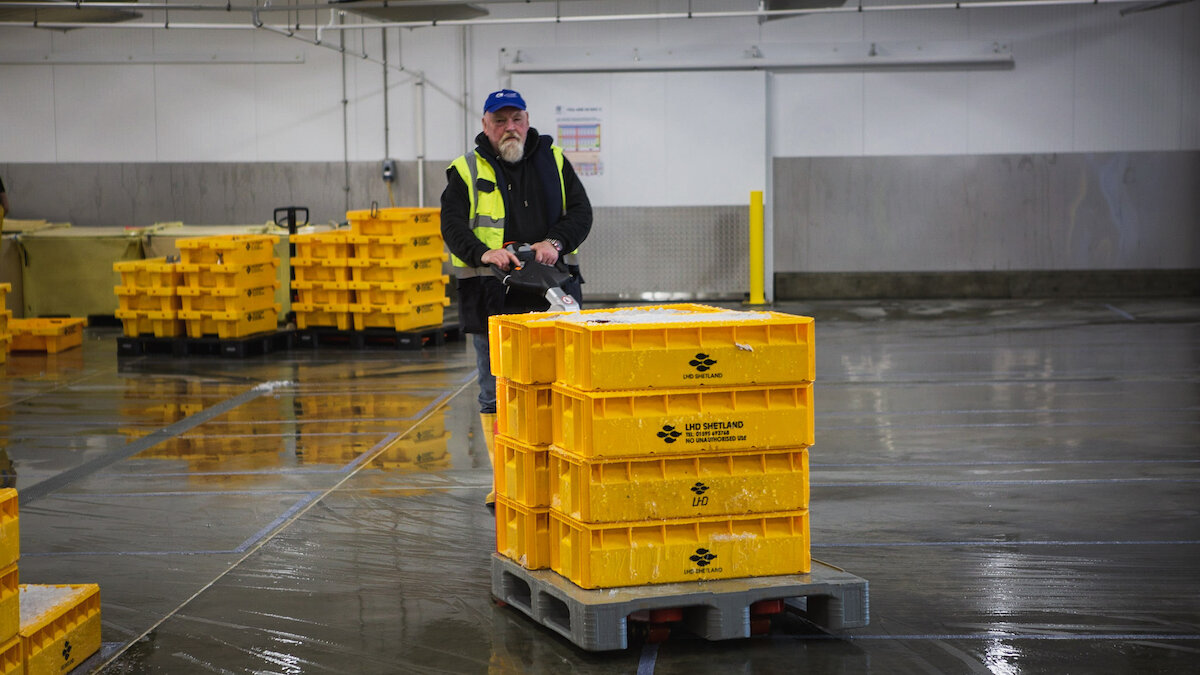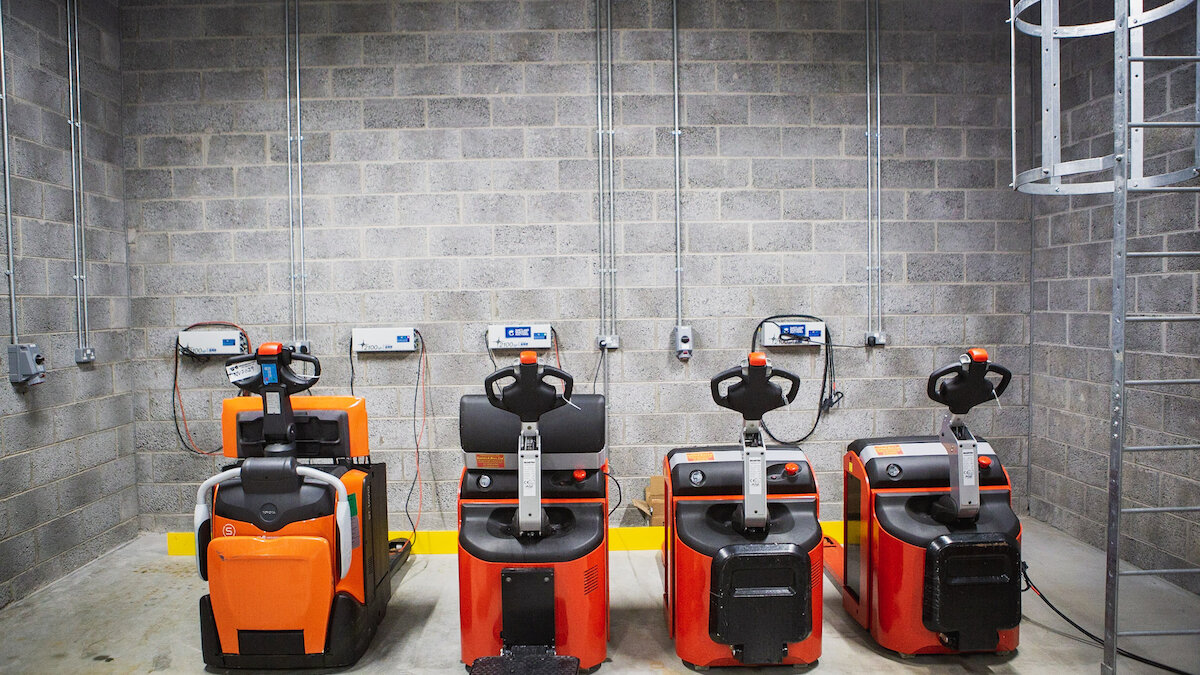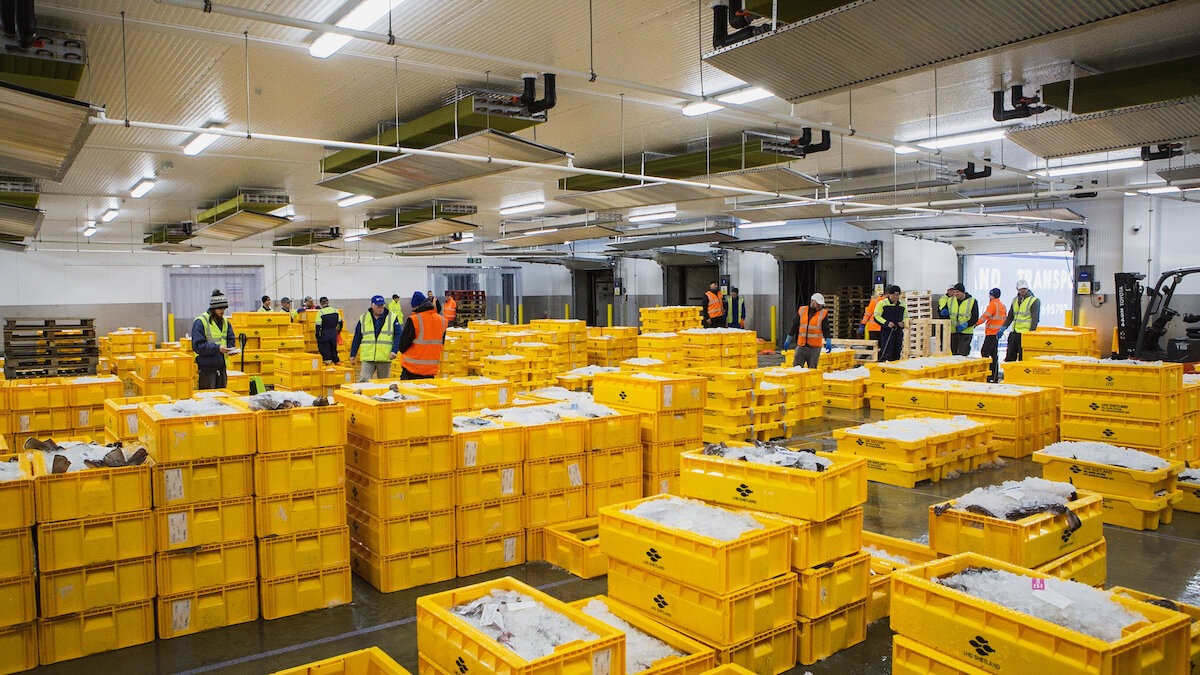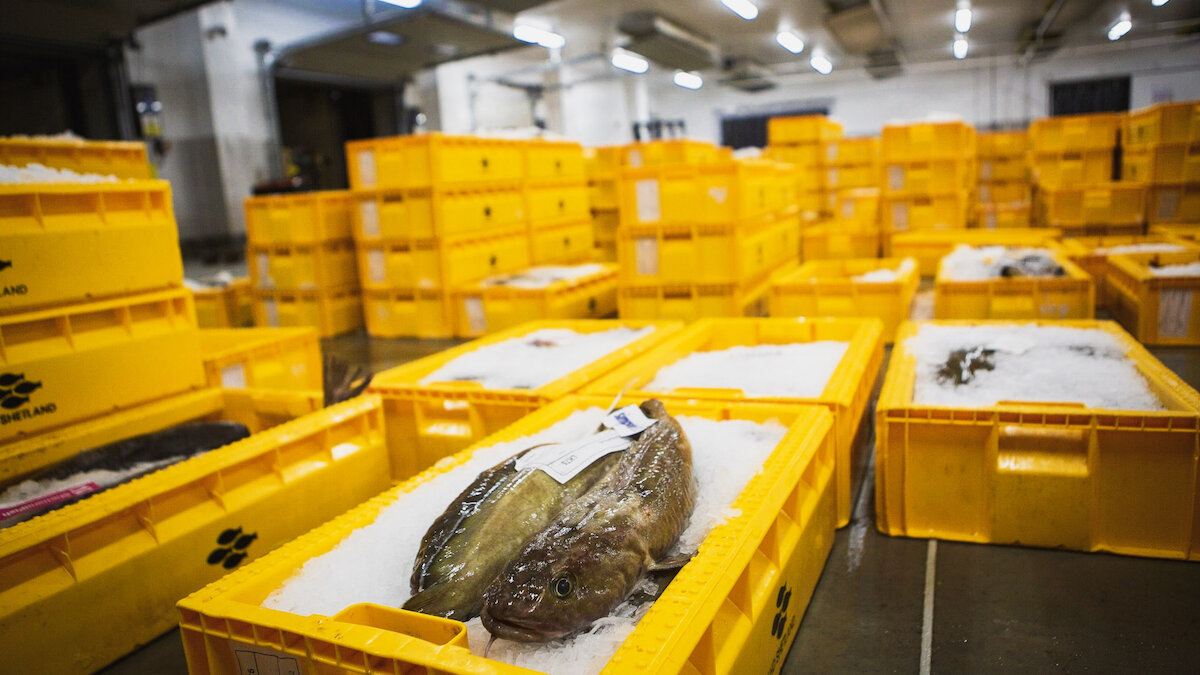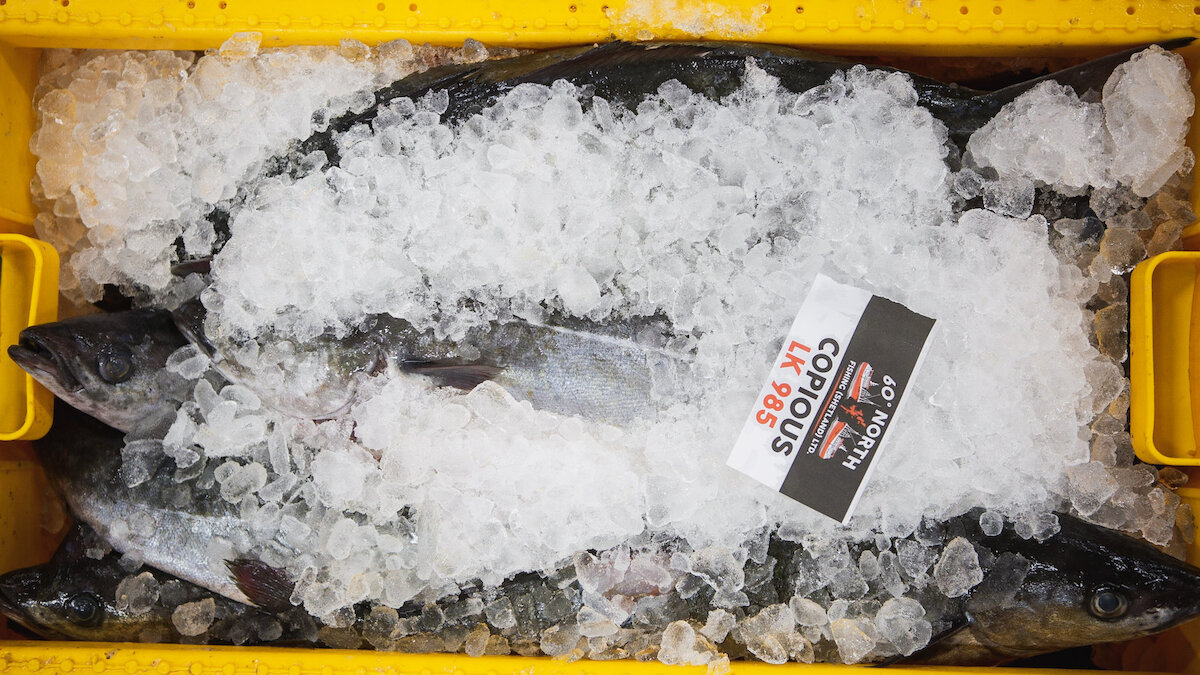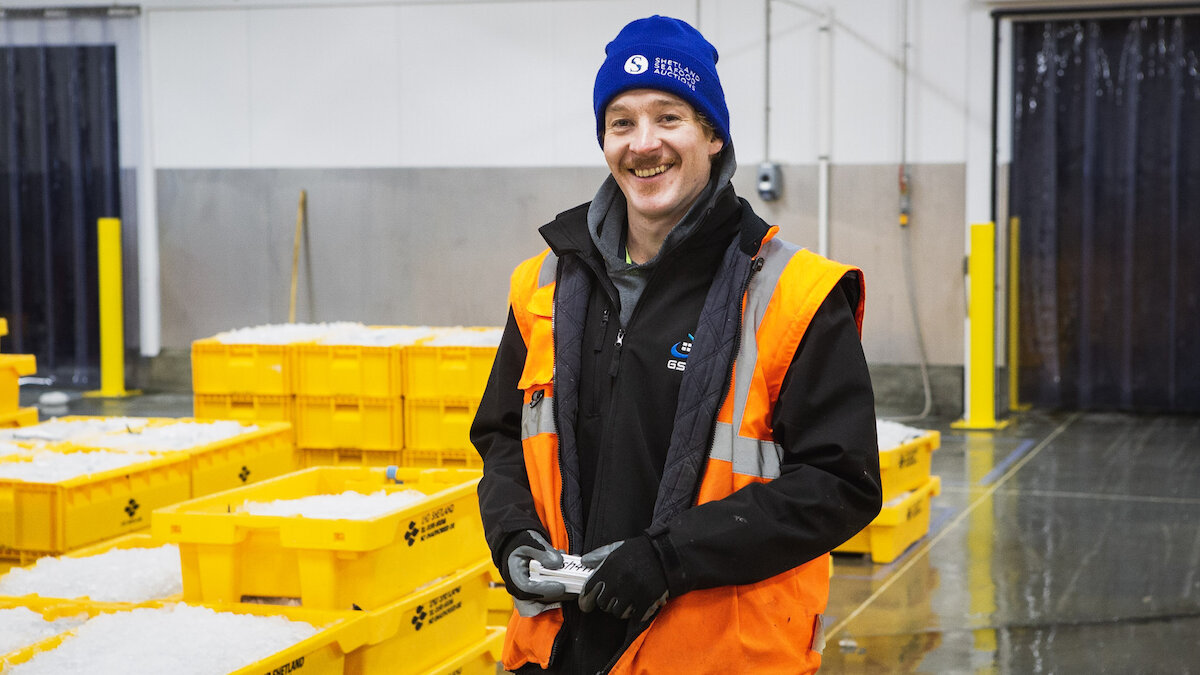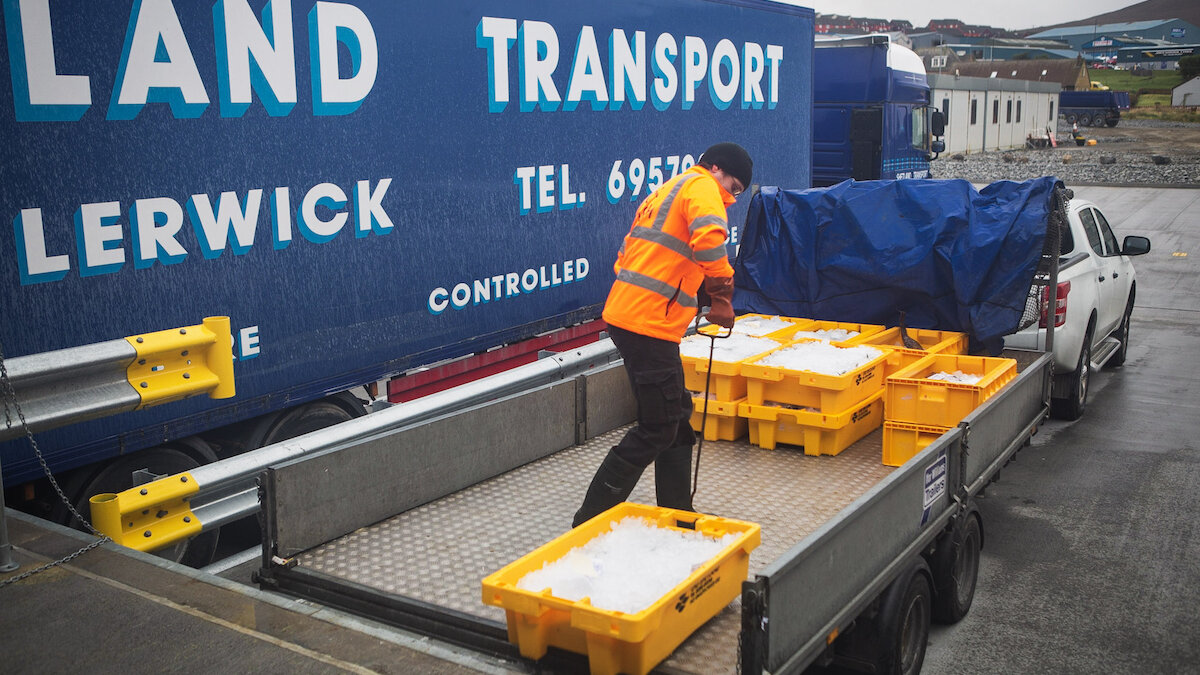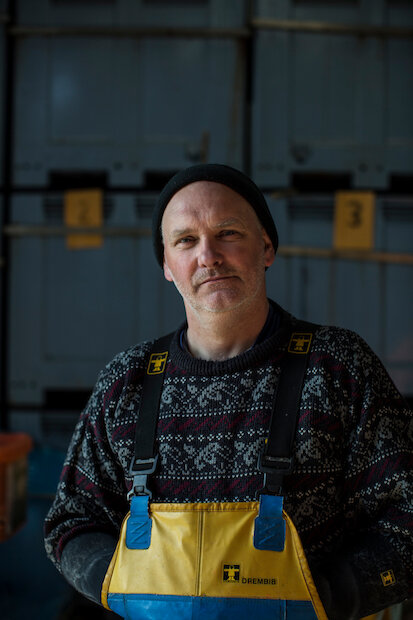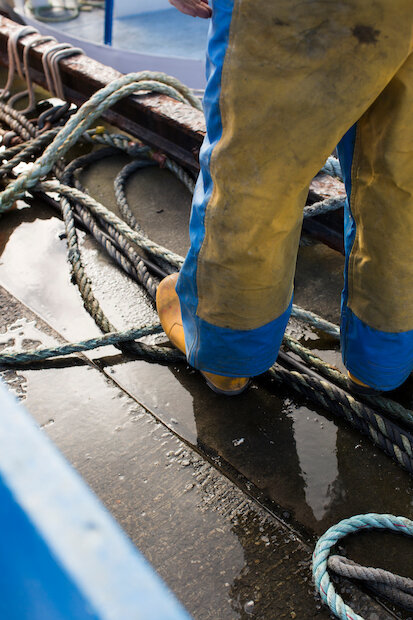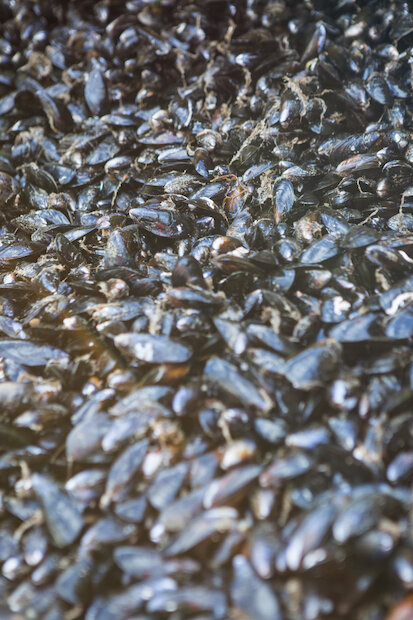At Lerwick’s new white fish market, everything is shiny and fresh. Take the new web-based electronic Dutch auction, which counts prices down rather than up, a bit like the Countdown clock. Or the air in the loading bays, silently chilled to two degrees by a new system, which means that stepping out on to Mair’s Quay is like stepping off a plane for a summer holiday. And the shiny, wide-eyed whiting, haddock, cod and more, packed uniformly into hundreds of bright yellow ice boxes marked with the name of the boat they came in on: Audacious, Copious, Courageous, Hopeful, Halcyon, Opportune, Prolific, Sedulous and the rest.
With new fish markets in Lerwick and Scalloway, and plans to expand its aquaculture offerings in Yell, Shetland is preparing for more growth in its biggest industry.
Fishing and aquaculture quick stats
- More fish is landed in Shetland than England, Wales and Northern Ireland combined
- Fishing and aquaculture are worth more than £320 million a year to the local economy
- More than four in five of the mussels farmed in Scotland are from Shetland
- A quarter of farmed Scottish salmon is from Shetland
- The carbon footprint of Shetland's mackerel fishery is 8.5 times lower than any meat produced in the UK
The new £7.6 million white fish market, which opened in August, could be viewed as a statement of confidence in Shetland’s fishing industry, which is the biggest in Shetland, worth an estimated £320 million a year to the local economy. It’s important to the UK, too. More than a quarter of all the fish landed in the UK is landed here; more than the total in England, Wales and Northern Ireland combined. With Brexit approaching, and the possibility of bigger quotas in 2021, Shetland is hoping that an already booming portion of the local economy can get even stronger.
The new market at Mair’s Quay replaces the market at Laurenson Quay, upping the size of its temperature-controlled bays from 726sqm to 1,600sqm. Outside, the dock has been deepened, meaning that larger boats can berth – not just from the hundred-plus boats that make up the Shetland fleet, from tiny shellfish boats to the largest pelagic vessels, but also boats from the Scottish Mainland and elsewhere, who will be able to fish in the rich grounds around Shetland and not have to travel all the way home to process their catch.
In another part of the market, home to changing rooms, canteens and offices, the Dutch auction system has been updated with new technology and two screens, effectively meaning that local buyers can bid for boxes of fish twice as fast, with two sales happening at the same time. Following classic rules of supply and demand, representatives from half a dozen or so local companies compete for boxes, which are soon electronically tagged, shrink-wrapped and loaded into temperature-controlled trucks to head to the Mainland and well into Europe, whether to top London seafood restaurants or Continental supermarkets. Higher-value catches such as monkfish, lemon sole and halibut are hand-graded, and fetch higher prices than haddock, pollock and more common fish.
“Everything in the building is state-of-the art, and designed for more efficiency, safety and comfort for staff,” says Victor Sandison, senior commercial executive at the Lerwick Port Authority. ‘It means that everything can be done faster and better, and reflects a wider optimism in the sector.”
That optimism remains, despite Covid-19 lockdowns affecting sales in the short term, with weekly numbers dropping from around 10,000 boxes a week to around 7,000. “We’ve seen a drop, but we’re already seeing demand improving, and expect that to continue,” says Sandison.
The confidence in the wider fishing industry isn’t just reflected in the white fish facility at Mair’s Quay, which is now part of a wider cluster of fishing-related businesses such as LHD, the vessel management company that acts as agents for the Shetland fleet, helping boats to prepare for fishing trips and helping them to process their catch. A new £5.6 million fish market has also been built in nearby Scalloway, Shetland’s second biggest commercial port, which also doubles the size of the facility and also uses only half the energy of the fish market it has replaced.
Meanwhile, the islands’ pelagic fishermen are gearing up for even bigger hauls of herring, mackerel and more. In 2019, three new boats – Charisma, Zephyr and Adenia – were brought in to replace older ships. From 69 to 75 metres in length, each of these super-powered boats is home to onboard gyms and lounges, and technology which means that they essentially fish exactly to order. In 2017, 40,000 tonnes of pelagic fish worth more than £30 million were landed at Lerwick’s Pelagia factory, the largest pelagic processing plant in Europe. As in the white fish sector, the pelagic fishermen – many of whom are based on the little island of Whalsay – are hopeful of larger quotas from next year, which are currently the only thing limiting their possibilities.
Aquaculture has also become a key part of the Shetland industry (fishing and aquaculture are increasingly lumped together), with a quarter of Scottish salmon and 81 per cent of its mussels farmed here. While the demand for mussels, in particular, has been hit by Covid-19 lockdowns, infrastructure is being prepared for more growth in this sector, too. In Cullivoe – Shetland’s third largest fishing port, on the North Isle of Yell – the industrial estate at the pier is doubling in size, with extra space for salmon farmers Cooke Aquaculture and highly regarded Cullivoe mussel farmers C + A Thomason. There are plans to build Shetland’s first whelk farming business, with help from the NAFC Marine Centre in Scalloway, which is both an educational institution and a live source of research support for Shetland’s fishing and aquaculture businesses.
While aquaculture outfits tend to be on the lookout for new employees, Sandison says that more young fishermen have been joining the Shetland fishing fleet than ever. “We’ve seen the local fleet grow in the last few years,” he says. “And a lot of it has been younger people. With the new facilities, there’s a lot of hope for the next few years. We think they’re going to be good ones.”
